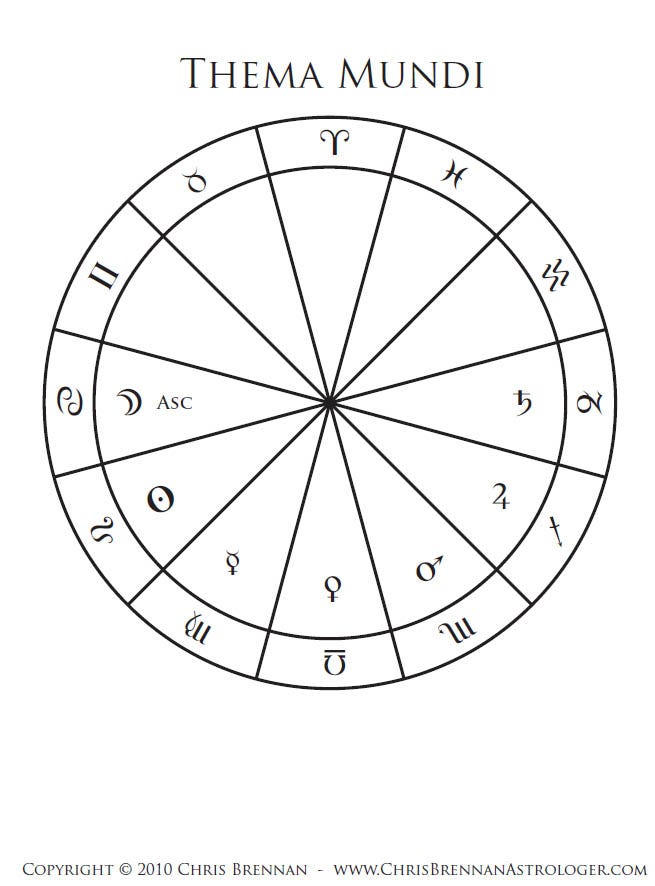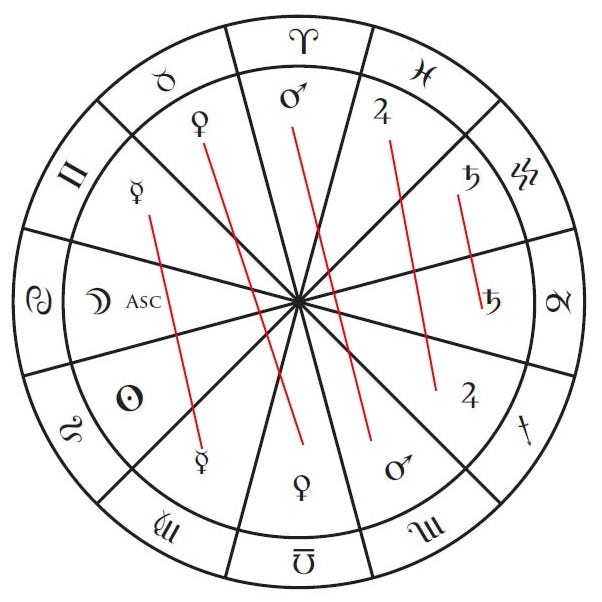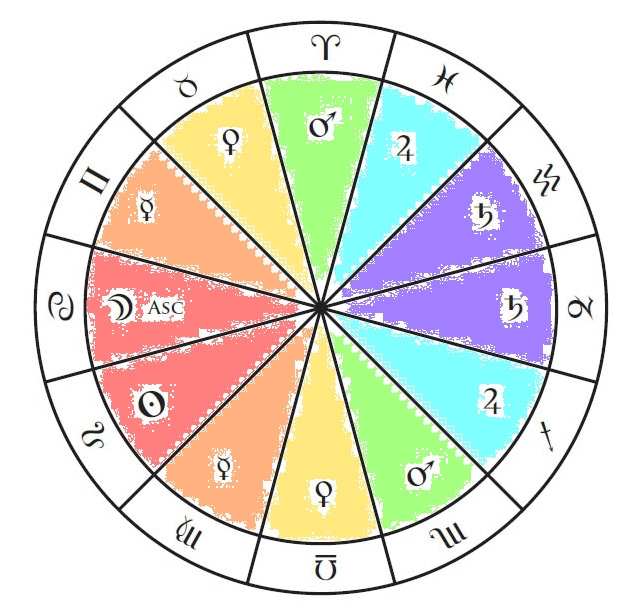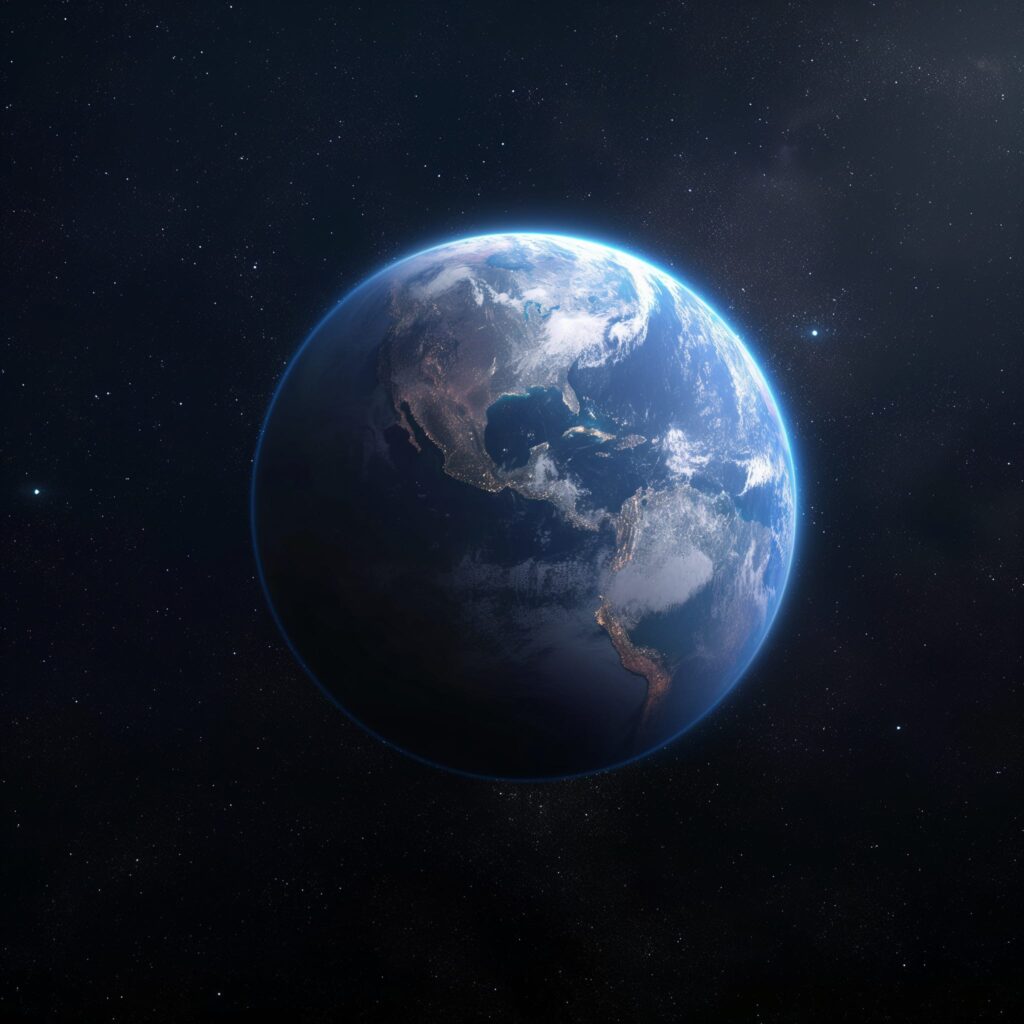The Origin of the Zodiac – Part 12 of the Chemistry of Time
The calendar – based upon the rotation of the Earth around the Sun – keeps track of time on Earth. If one were on a different body in the solar system the day and year and seasons would adjust for that worlds particular relationship to the Sun. The system is the same – it is built to measure the dynamics of the world we live in and the physical characteristics thereof. The territorial elements (the zodiac signs) are talking about Earth in a physical way. The Solar light is filtered through our atmosphere and altered accordingly as it enters the world we call Earth. In the same way that a plant may absorb only red and blue light, leaving the green to be reflected, our planet is absorbing and reflecting the elements according to our planets alignment, allowing it to pass through down to us.
This is expressed in the system via a concept known as rulership. Each sign has a planetary “ruler” who is said to influence the character and nature of the zodiac sign. As alluded to before, Mars is the ruler of the sign of Scorpio and this results in Scorpio carrying certain properties and traits derived from the active element “Mars.” We are also told that the current position of Mars influences the characteristics (volume, quality, etc) of the zodiac sign that it rules. As such the territory of Scorpio will present different properties depending upon where Mars is at a given time. How is this possible? Consider that the Earth itself was at one time formed and as such it also has a natal chart which carries the placements at the time of formation. These placements are responsible for many of the characteristics of the individual zodiac signs and are key to understanding them. The territorial element called Scorpio is an element that was at least in part formed by the influence of Mars in the first place. It is as though this is a physical part of the body of the Earth and it was made up of the Scorpio element in some way. We get this from the most fundamental of all charts – the Thema Mundi:

The Thema Mundi is a rich source for understanding many structures of the system but for now let’s focus on the planets and where they are placed in it. We see that the first sign is Cancer, with the Moon there. It is followed by Leo with the Sun, Virgo with Mercury, Libra with Venus, Scorpio with Mars, Sagittarius with Jupiter, and Capricorn with Saturn. We are being shown that at the time of the formation of Earth the planets were in the territories indicated and as a result these territorial elements of the Earth were structurally informed by that presence. The reason the territorial element we call Cancer has the properties it does is in part because at the time of formation it was receiving the active element of the Moon, and that was imprinted and remains. The signs themselves are the result of how the planets were arranged at the time of Earth’s formation. As with Cancer and the Moon, the same is true for each of the other sign and planet combinations. Additionally, the pattern is reflected in the opposite direction as shown here:

The two luminaries each rule their signs and then, in order of their distance from the Sun, each planet rules the following sign in both directions. This elegant arrangement can be interpreted in many ways but at the core it shows the light generated from the Sun proceeding out through the planets, ordered by their respective distance from the Sun, and also that same light first being reflected by the Moon and then proceeding in the same order but above the horizon in the opposite direction. This chart shows a birth time at night, just prior to the “rising” of the Sun and the beginning of day – poetically referencing that day and night were created at the same time, being an Earthly phenomenon in the first place.
We are left with the following “planetary rulers” of each zodiac sign:
Moon – Cancer
Sun – Leo
Mercury – Virgo, Gemini
Venus – Libra, Taurus
Mars – Scorpio, Aries
Jupiter – Sagittarius, Pisces
Saturn – Capricorn, Aquarius
The significance of this is that the properties of the sign at any given time are always influenced by the state of the planet which rules it. This strongly implies that the territorial elements (the signs) are native to the Earth and that they are constantly renewed by the active element ruling them. As a result the signs, which refer to fixed directions in the sky, also become filters through which the active elements (planets) must pass through when entering Earth. If these were colors filtered through a prism it might be viewed more like this:

The red zones are where solar light in some relatively “pure” form enters whereas the other colored sections are where light modified by those planets enter. We can surmise that solar rays generated by the influence of each planet upon the Sun carry differences which exist along a spectrum determined by their distance from the Sun -let’s say they have a shorter-longer wavelength owing to the distance from the planet to the Sun. When that light then leaves the Sun for Earth it carries the same wavelength with it, which is used by the Earth to form the territorial elements. The signs are the parts of the Earth which receive the particular planetary element, as they are tuned to filter other wavelengths and reflect only that of their “ruling” planet. The result is that our experience of “Mars” or “Jupiter” is always passed through the territory of the signs that those plants rule. All active elemental light that is of the “Mars” variety enters physically only through the elements known as Aries or Scorpio. Here we see the basis of an additional attribute that distinguishes signs – polarity. Signs are grouped as either masculine or feminine in two groups by triplicity. The Air and Fire signs are Masculine, or active, and the Earth and Water signs are Feminine, or receptive. You’ll note that each planet that is the ruler of two signs has one of each of these polarities, and among the luminaries the Sun is the active/masculine and the Moon the receptive/feminine. This tell us that as the “Jupiter” element enters Earth it is taken in two directions – depending on polarity – that almost certainly reflects a distinction between daytime and nightime.
It is this structure of the Earth that creates the zodiac which we and all things on Earth live beneath. The territorial elements are the local alterations to the formula, which is generated outside of the Earth by the planets and delivered to us via the Sun. The result is that we cannot measure an active planetary element when on Earth without considering the way it has influenced the territorial elements which absorb it.
This is a relatively complicated part of the system but one that contains important information for utilizing the calendar to understand a given time. The properties of a sign are always influenced by the properties of the active element which is known to correspond with it via “rulership.” This phenomenon is best explained by the Earth itself being formed, as shown by the Thema Mundi, and us being recursively underneath the Earth itself and thereby subject to its structures. One can speculate that a similar zodiac formation occurs on other living planets, according to their respective formation, but that remains yet to be discovered at the time of this writing.


Leave a Reply